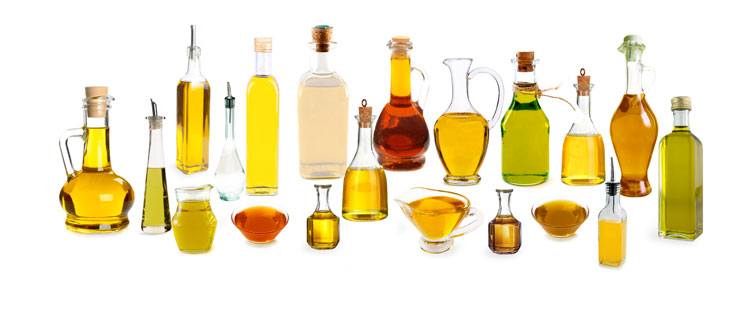 If you’ve followed a recipe, you’ve used cooking oils. However it is easy to be overwhelmed by all the varieties and options of cooking oil. Even when you know what you are looking for it can be tough to navigate through all those bottles and labels!
If you’ve followed a recipe, you’ve used cooking oils. However it is easy to be overwhelmed by all the varieties and options of cooking oil. Even when you know what you are looking for it can be tough to navigate through all those bottles and labels!
First things first, what’s the purpose of using cooking oil?
Cooking oils are a type of fat and no matter what he current fad diet says, fat is a nutrient that is required in large amounts in our diet. Oil is just one way to meet our fat needs. Other ways would be using foods that are higher in fat content, like nuts, avocado, eggs, fish, etc… There are different roles of oil in our cooking… Cooking oil can add wonderful flavors and aromas (think olive oil, pumpkin seed oil, walnut oil, etc) which can balance out components like vinegar, lime juice or bitter-tasting vegetables. On top of that, oil can be used as a cooking lubricant when sautéing so that food can be cooked without sticking to itself and the pan.
In vinaigrettes, oil acts as a thickener by creating an emulsion with vinegar. Oil also adheres well to the surface of leafy vegetables allowing it to better coat and evenly distribute over the leaves causing the leaf to darken and its structure to weaken.
Cooking oils can come from a variety of sources. Cooking oils can be made from Nuts and legumes (peanut oil, coconut oil, walnut oil, soybean oil, etc.), Fruits (avocado oil, olive oil, etc.), or Seeds (canola oil, sunflower oil, grapeseed oil, flaxseed oil, etc.). Each oil can add something different to a dish and should be use
Understanding Smoke Point
Smoke point refers to the temperature where an oil starts to burn and smoke. If you go beyond an oil’s smoke point, the oil will not only have a burnt flavor but it’s beneficial nutrients (found in many unrefined oils) will be destroyed and harmful free radicals can be created.
There is a wide range of smoke points for cooking oils. Here is a guide choosing an oil for cooking.
- Oils for high heat cooking: High heat cooking (> 450 F) includes searing, browning, and deep-frying. Cooking oils best for high heat cooking include avocado oil, safflower oil, sunflower oil, and refined peanut oil. These oils are higher in monounsaturated fats so their smoke point is much higher.
- Oils for medium-high heat cooking: Medium-high heat (350 F – 450 F) cooking oils are good for baking, oven cooking, or stir-frying. Canola oil, almond oil, grapeseed oil, macadamia nut oil, corn oil and refined olive oil are best for medium-high heat cooking.
- Oils for medium heat cooking: Medium heat cooking oils (< 350 F) are best for light sautéing, sauces, and low-heat baking. These oils include extra virgin olive oil, coconut oil, corn oil, hemp oil, pumpkin seed oil, sesame oil, soybean oil, and peanut oil.
- Oils for no heat cooking: It depends what flavor you like and prefer as some oils are more fragrant or have a distinct flavor, such as extra virgin olive oil, truffle oil, peanut oil, sesame oil, pumpkin seed oil, etc…
The good news is that with so many cooking oils to choose from, many of us have one or two “go to” oils that fit most of our daily needs. However don’t be afraid to try something new every now and then. You might find something you like better!
Bill Rice is founder and Co-Publisher of the Great Family Cookbook Project, a website that helps families and individuals collect and share food memories through customized printed cookbooks filled with treasured recipes. Follow us on Facebook and Pinterest!
